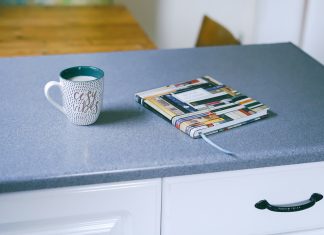
You may have heard about PCB design or printed circuit board design recommended to you for your business. Especially if you have not yet encountered it, this is the perfect opportunity to learn about PCB design. You are on the right page. In this article, we will tackle what a printed circuit board is, plus a step-by-step guide on how you can create a printed circuit board from scratch.
However, there are actually several companies that offer PCB design and layout services, such as Integra Sources. You can learn more and visit Integra Sources website for more information.
Without further ado, let us get to the discussion.
What Is PCB Design?
A printed circuit board, or otherwise known as PCB design, is among the most important design elements in the design of an electronics product. In many instances, an electronics hardware design engineer designs the circuit, then the PCB layout specialist will produce the PCB layout and design from a schematic that a PCB CAD system has provided.
Note that PCB layout and design is considered a specialist skill that requires know-how in PCB design software and PCB CAD system. It also requires various standards and techniques utilized to ensure that basic circuit design is successfully transferred to an overall PCB that can be manufactured in electronics circuit facilities.
Now, let us move forward to the step-by-step guide on how you can create a PCB from scratch.
How To Create A Printed Circuit Board From Scratch
Though there are specialists that handle PCB design and layout, it can also be a DIY project.
In order for one to create a PCB, you will need to draw holes, pads, and wires for the circuit. In this way, you are getting started doing PCB design.
Once you are finished, you can send the design to the manufacturer or etch it yourself. There are actually several tools to help you in this project. There will always be providers of PCB design and layout, but it is best that you have the know-how regarding this.
Step 1: Create Or Look For A Circuit Diagram
Prior to beginning to draw wires and other stuff, you should know what circuit you want to build. What you need right here is a circuit diagram.
You can utilize one that somebody else has made, or you can design your own from scratch. One of the basic things you can start with is a blinking LED.
Then, you move on to the next step.
Step 2: Draw The Schematics
In order to succeed in this project, you will need to install PCB design software. There are many platforms that also offer a step-by-step guide, and you can find software that is for free.
Start creating your new project. Draw your schematics from the circuit diagram in the first step.
When you think you are set up, run the Electrical Rules Checker or ERC to see if there are any errors.
Step 3: Start Designing The Board Layout
This time, you will need to draw the board. First and foremost, you need to transfer your schematic diagram into a layout or drawing of your PCB.
Looks difficult? In fact, it is not. This is because the PCB software will be in charge of comparing what you are laying out to the schematics file. This will guide you in creating the same connections.
You will also need, at this step, to decide the footprint to choose for your components. Is this through-hole? Or, is this surface mount?
Components in through-hole are easier to solder. Beginners are recommended to choose the through-hole option. Surface mount tends to be smaller, so they take up less space. This is also a little bit more challenging to solder. But practice makes perfect.
Once you are done, run the Design Rules Checker or DRC to see if there are any errors.
Step 4: Begin Getting Your PCB Made
Once you are done drawing your PCB design, you will have to implement those details. You can etch your PCB at home, but also, you may order a PCB from one of the many PCB manufacturers in the market.
As for the cost, this is not expensive. You can find five copies of your board for less than $5.
A classic way to send a board layout to a manufacturer is by creating Gerber files from your design. There are some who accept KiCad files directly so you will not be required to do any conversion.
Step 5: Order The Components
Remember, it takes time before your PCB is ready. While you are waiting, make sure you have all the components you need. Nothing could be worse than receiving a fresh PCB, only to find out you are missing the key components.
There are various shops where you can purchase your electronic components, including online stores.
Step 6: Assemble The PCB Through Soldering The Components To The Board
At this time, you should be ready to assemble your PCB by soldering the components to the board. You now have your circuit board, fresh from the printer. You also have ordered and received the component. In this step, you will have to solder these components to the board.
Set up your workbench and get your soldering tools out. Layout the components and the PCB on the workbench.
Be sure to have your computer close by as you complete this step on PCB design. This will be utilized to check the orientation and value of the components if needed. You may also print out the schematic with values and the board layout. Then, get started to solder.
With these steps, you will be able to create your own PCB from scratch. There are several benefits of having a PCB, such as giving low electronics noise, reducing inspection time, and offering reliability in the performance of the circuit. PCBs are also easy to repair, immune to movement, and lower in costs. The basic variants of your PCB are single-sided, double-sided, and multi-layer.










